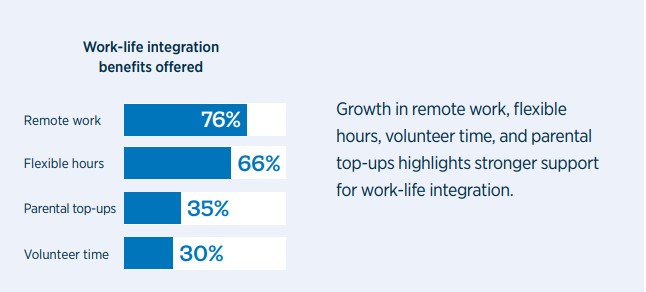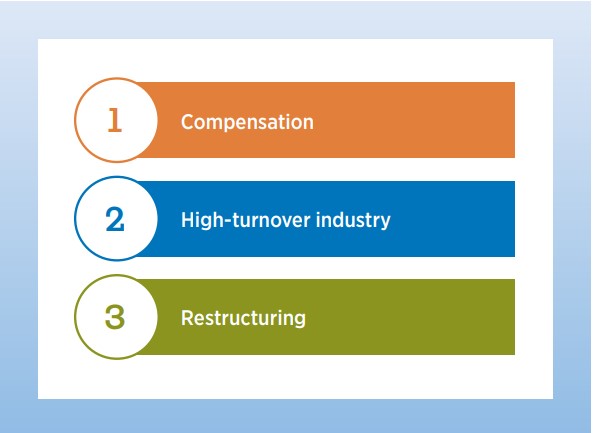
How can we improve work-life balance?

Workers’ wellbeing is a high priority for employers this year, and they are improving their offerings to support employees.
The importance of supporting one or more dimensions of employee wellbeing has increased for 85% of employers in 2024, according to a Gallagher report.
Employers have enhanced emotional wellbeing supports (68%) the most, while the financial (37%), physical (34%), and career (33%) aspects received nearly equal emphasis.

Source: Gallagher
“Interest in improving access to mental health resources, and their use, is grounded in the ability to promote social connectedness. Strong relationships and a sense of community at work can provide emotional support, reduce stress, and contribute to a sense of belonging,” Gallagher says in its 2024 Workforce Trends Report Series.
“They also help to lower the risk of mental health issues and physical conditions, ranging from anxiety and depression to heart disease.”
Mental health benefits have become a defining feature of what professionals consider a "good job" in today's employment landscape, according to another report.
How can we improve work-life balance?
Employers are also making it easier for workers to maintain work-life balance, finds Gallgher’s survey of 473 organizations across Canada.
Specifically, employers are offering the following:

Source: Gallagher
These come as one in three employers (33%) had an actual turnover of 15% or more in 2023, including 10% with a rate of 30% or higher.
In comparison, since 2020, the percentage of those that experienced a rate under 5% decreased by 11 points to 25%.
“Looking at points in between, turnover was 6%–9% for 15% of employers and 10%–14% for another 19%,” according to the report.
The top factors that impacted turnover are:

Source: Gallagher
“Pay increases alone cannot sufficiently and sustainably raise engagement levels or lower turnover,” says Gallagher in the report.
“Because of this limitation, there’s a need for enhanced education about the full value of total rewards, including paid time off (PTO) and career development opportunities. Simple additions like an annual total rewards statement familiarize employees with their pay and benefits, which can help them understand and appreciate the organization’s contributions. And some employers articulate how their complete total rewards value proposition stacks up with competitor organizations, based on calculations.”
Canadian employers remain optimistic about hiring for the fourth quarter of 2024, with the Net Employment Outlook (NEO) standing at 26%, according to a report from the ManpowerGroup.